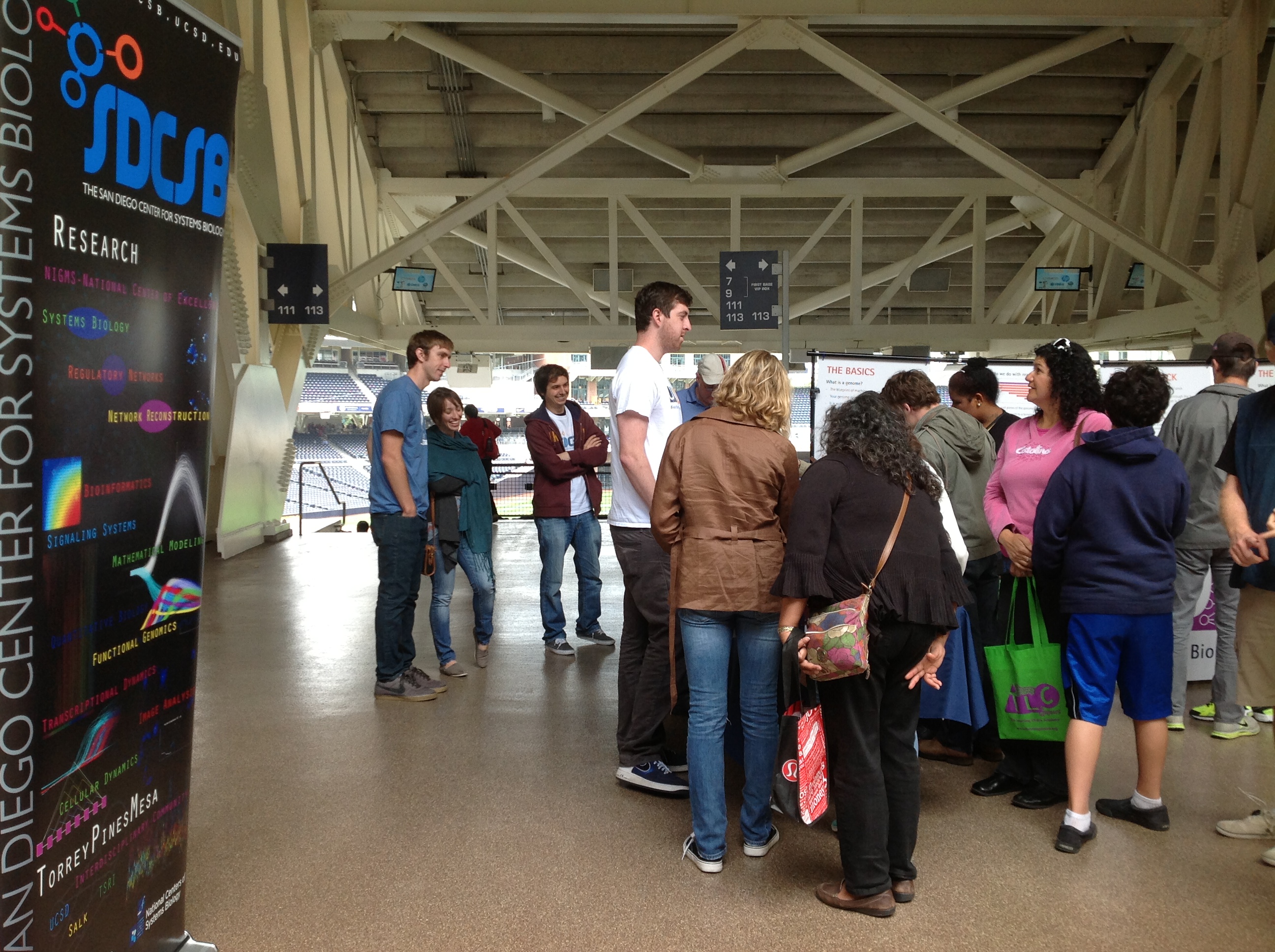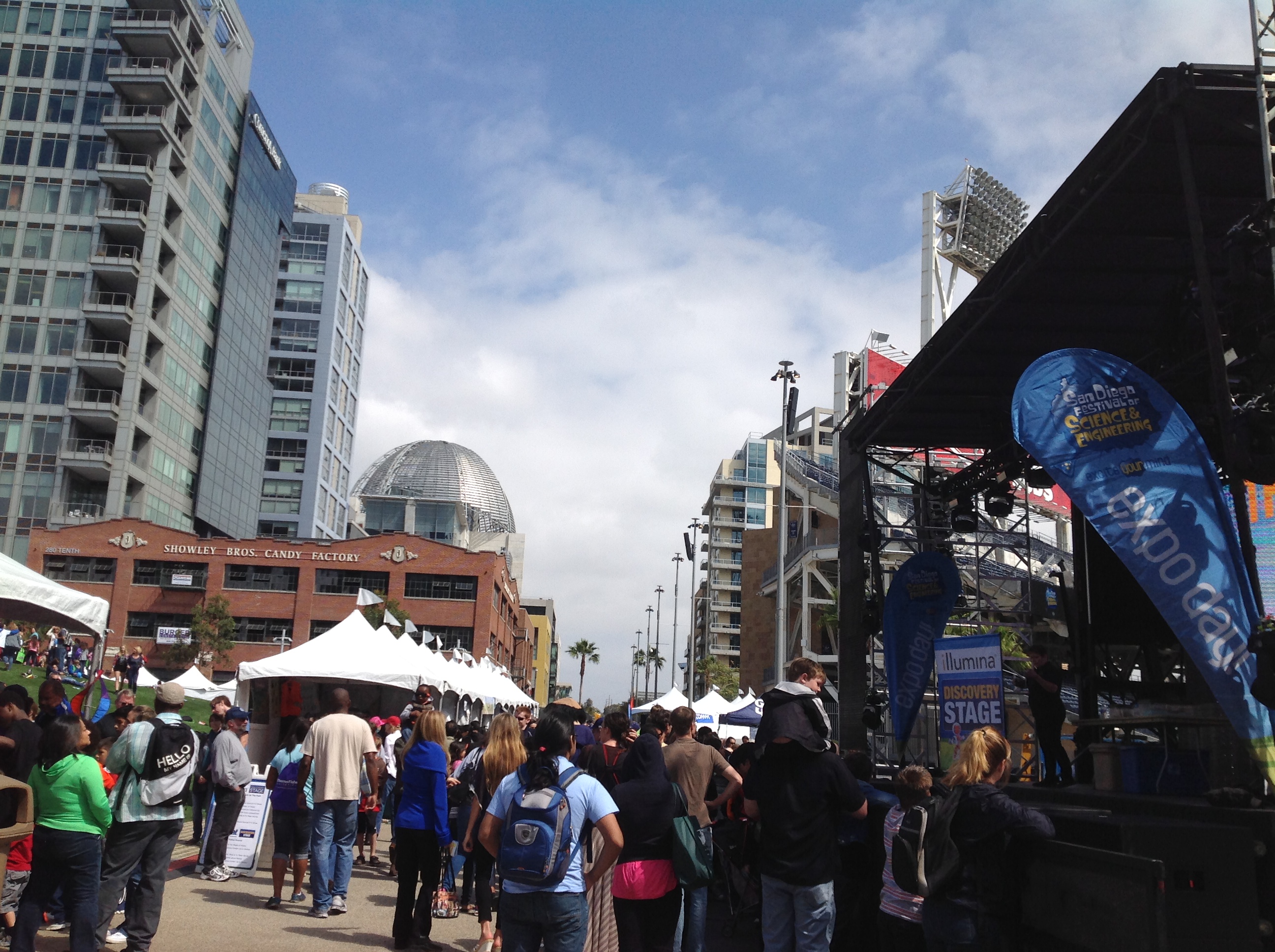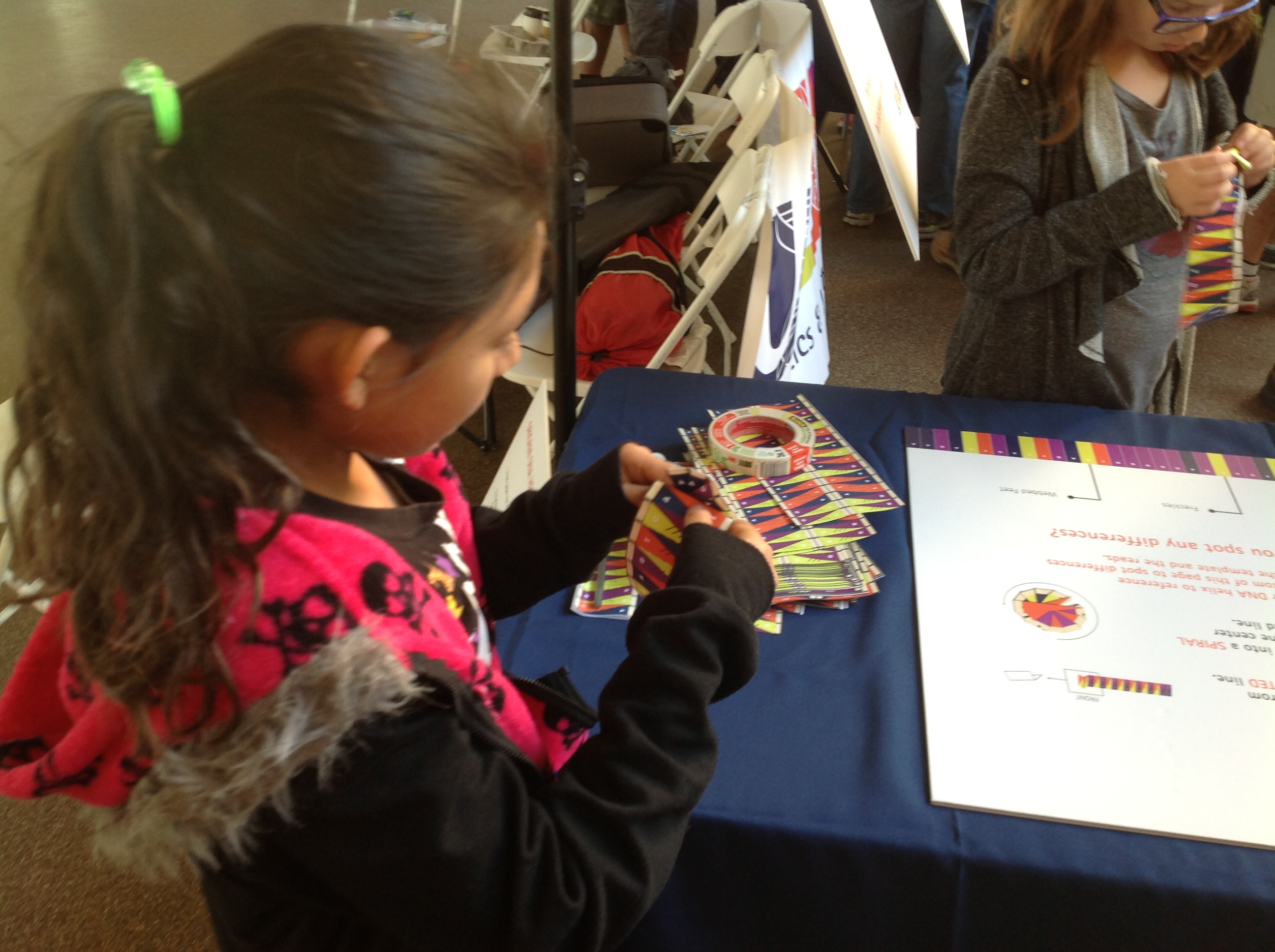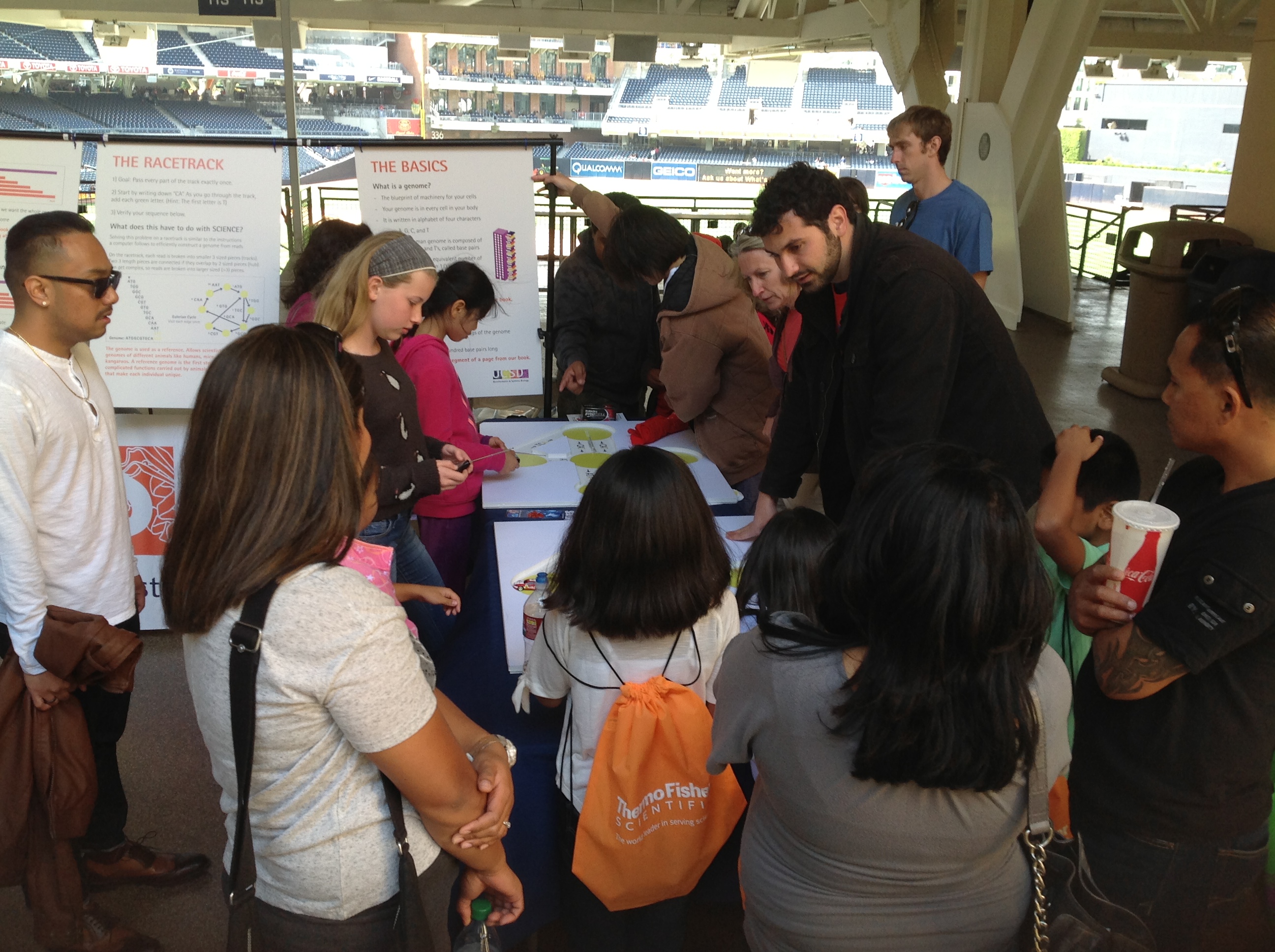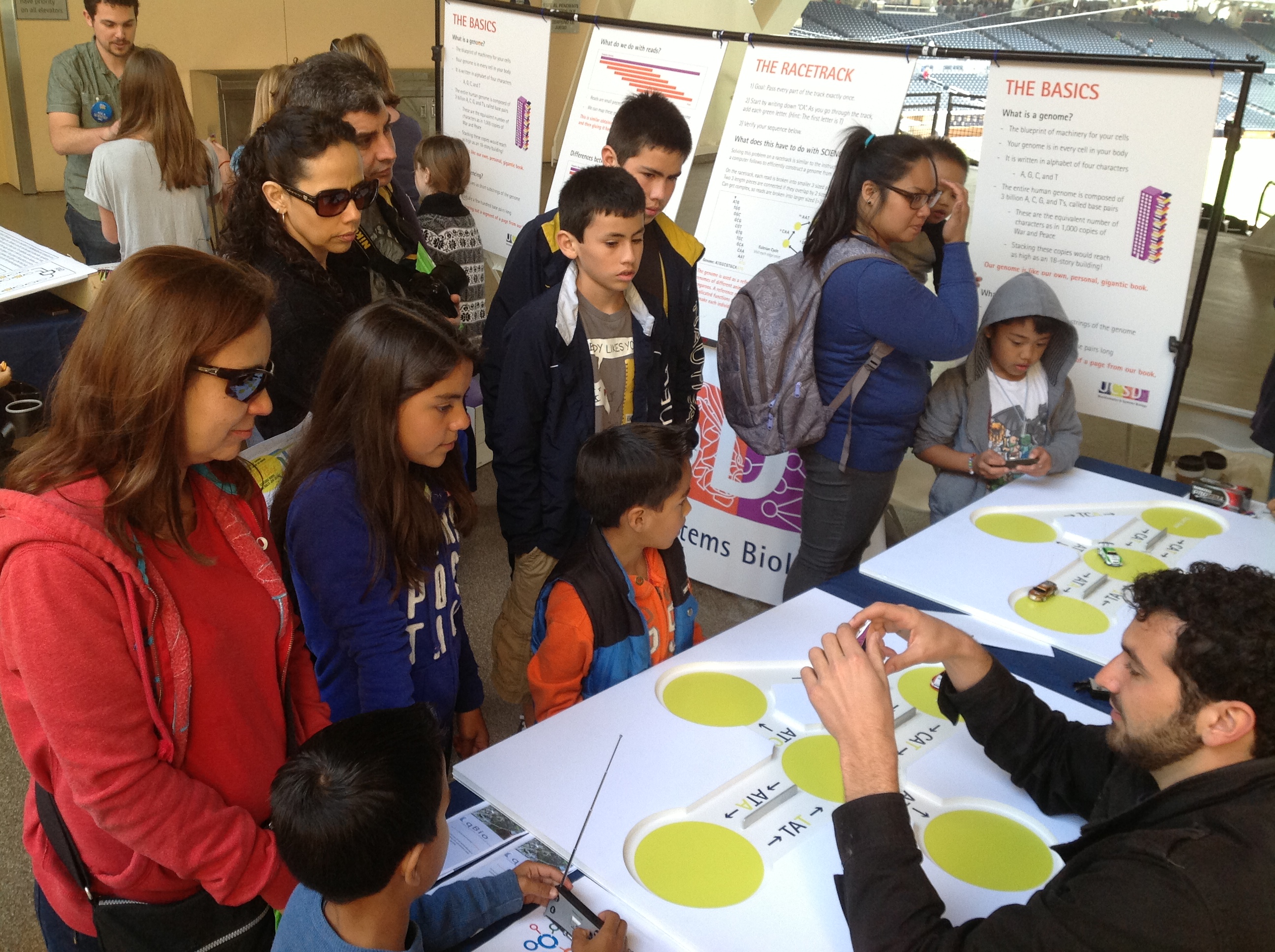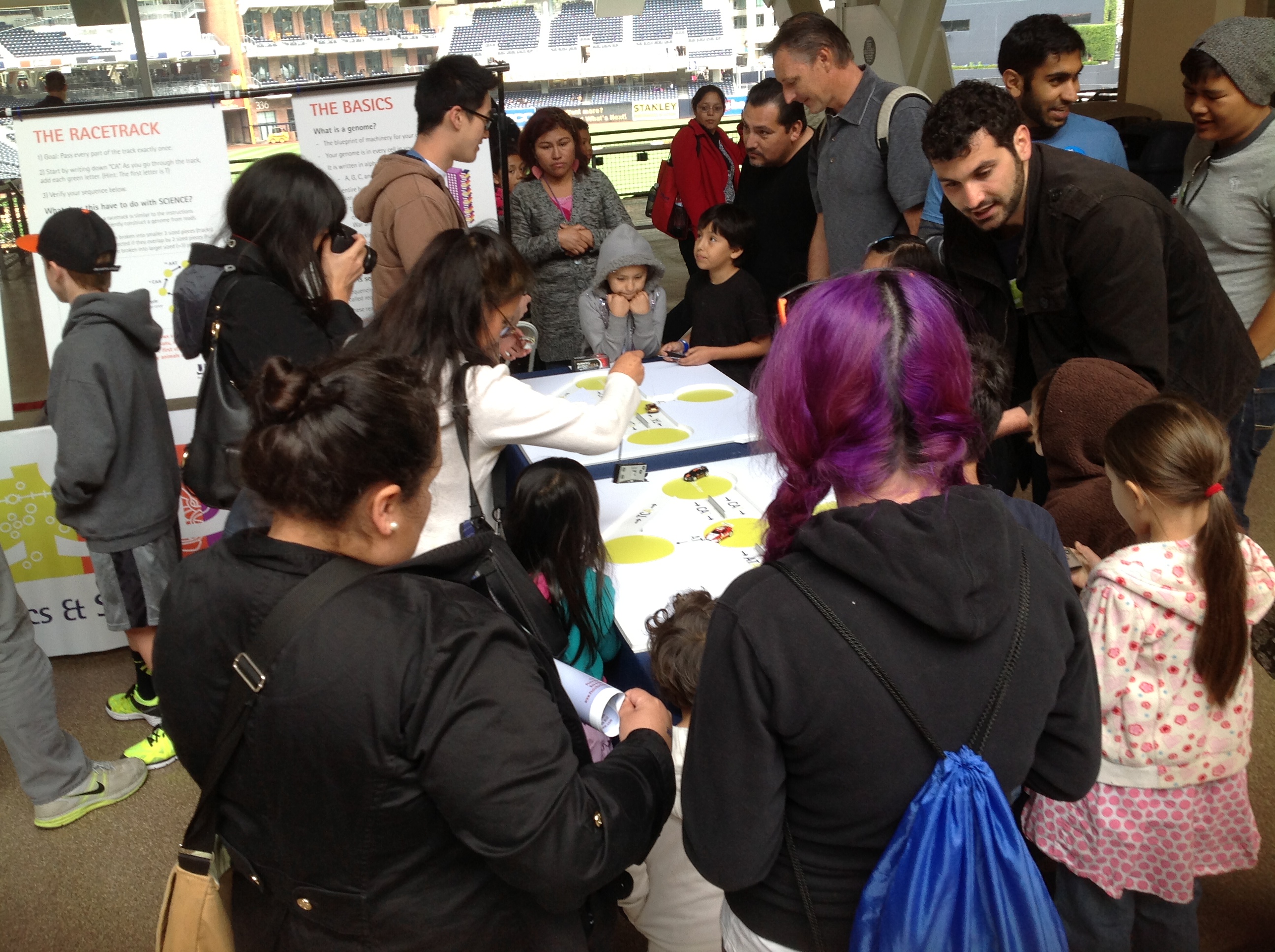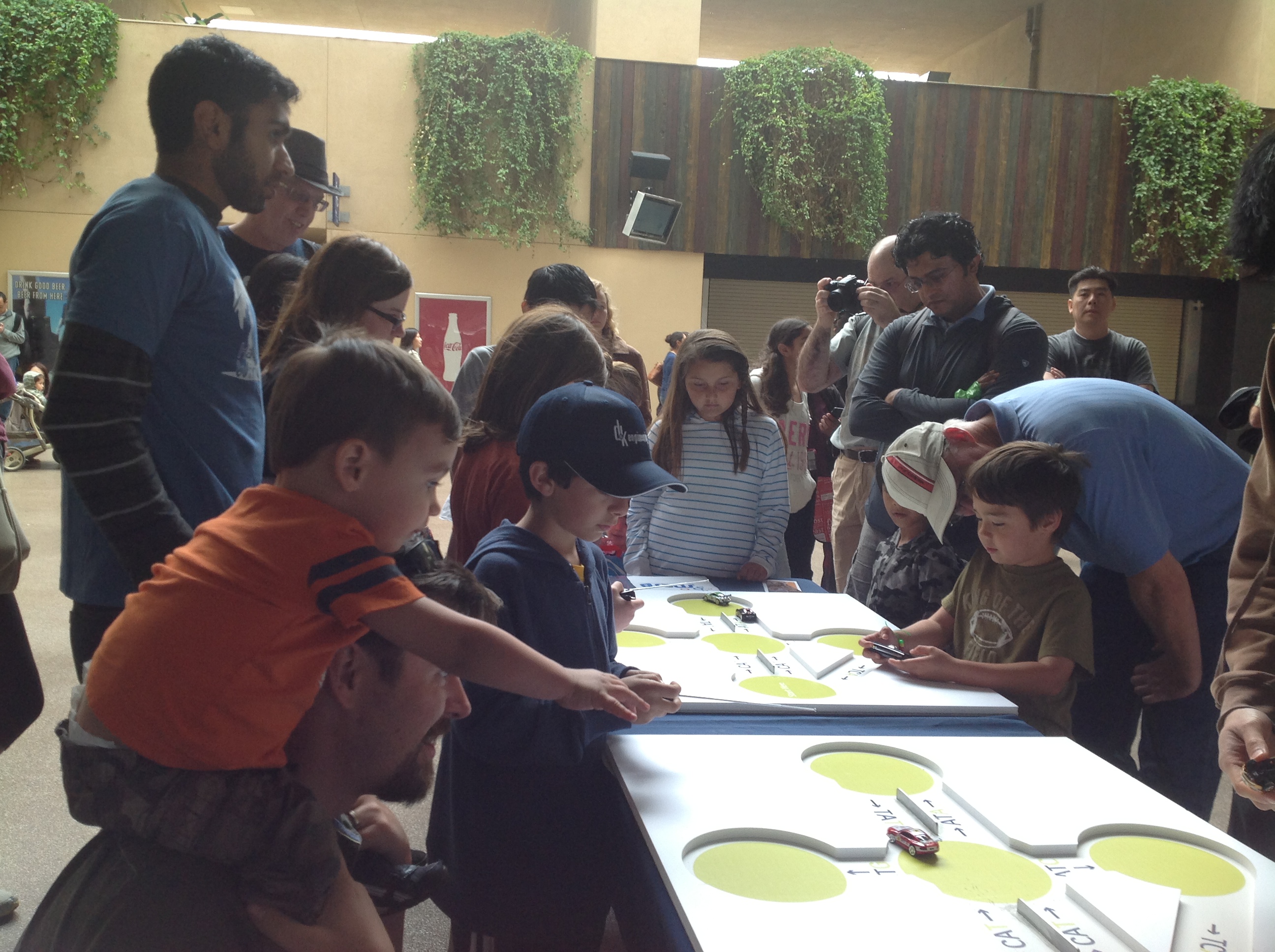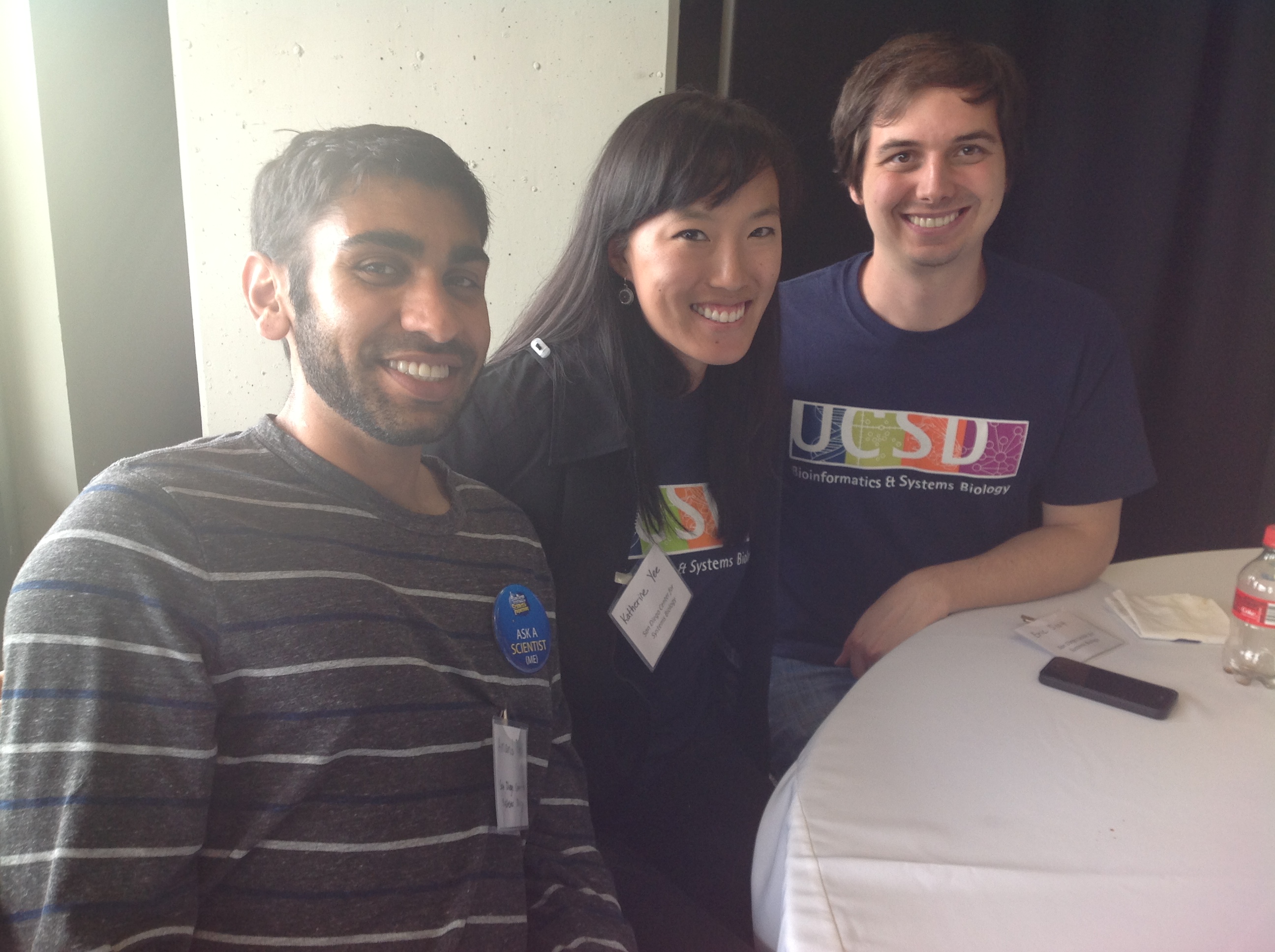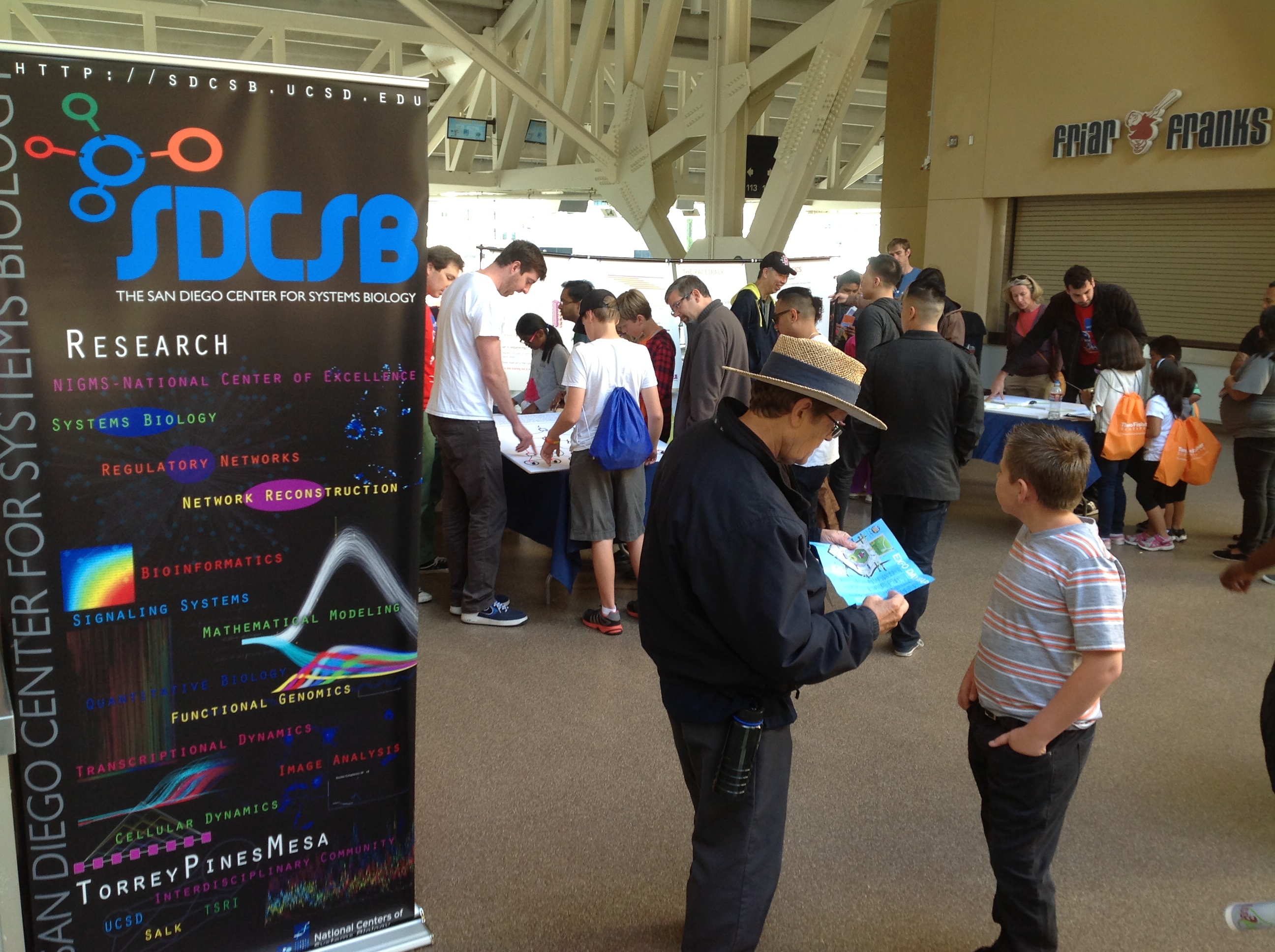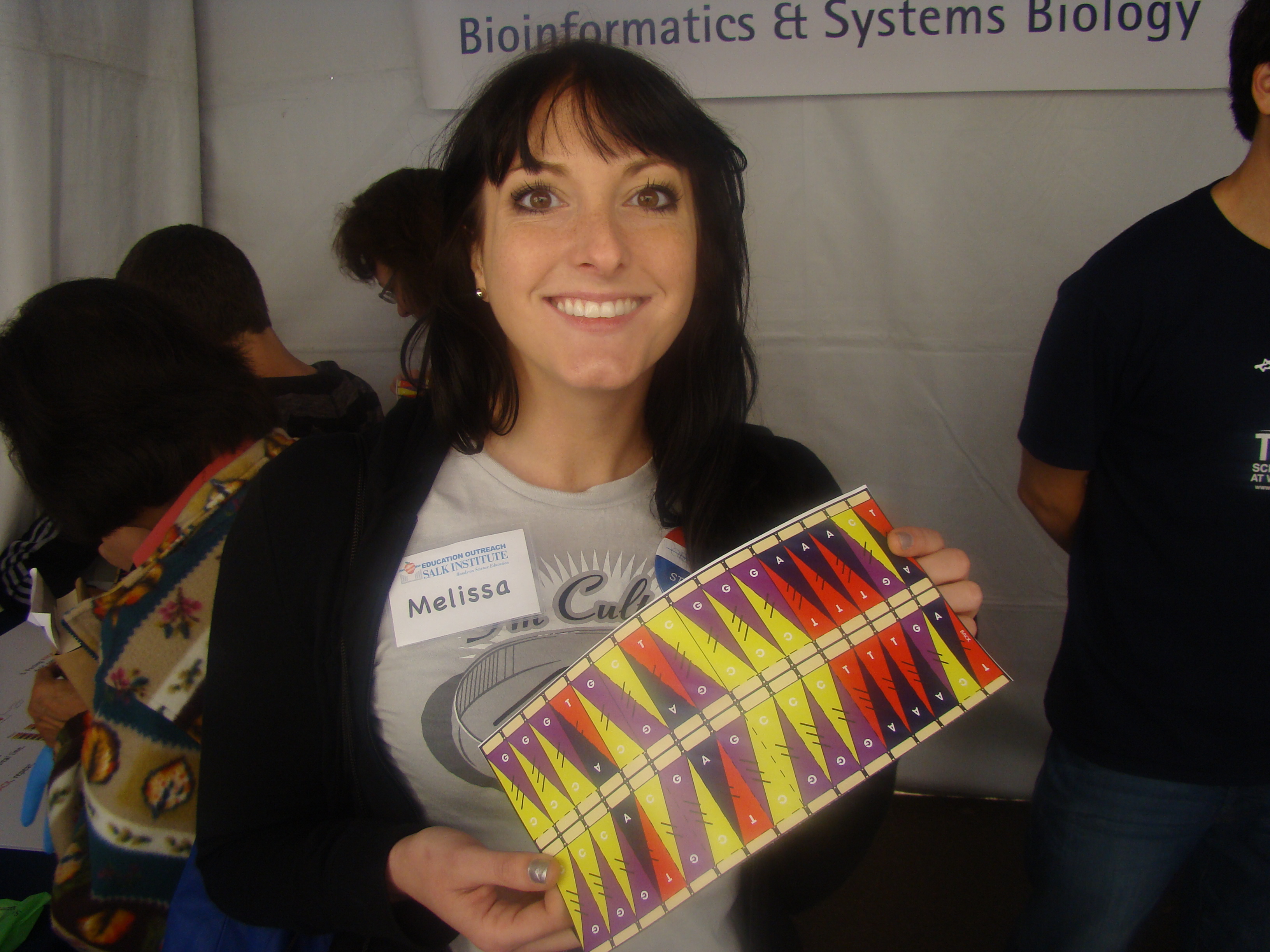Genetics, Bioinformatics and Systems Biology Colloquium
Thursdays, 12:00 pm – 1:00 pm
UC San Diego, Powell-Focht Bioengineering Hall, Fung Auditorium
Complete schedule here
The eight-day San Diego Festival of Science and Engineering embrace the communities of science, engineering and technology with a shared goal of inspiring the next generation of innovators and researchers. This is accomplished by providing opportunities for students from all backgrounds to participate in hands-on activities, to meet scientists and engineers, and to learn how recent scientific research and discoveries affect our daily lives. Most of the events are offered at no charge to participants. This event has quickly grown in popularity over the years, with 150 groups hosting booths and stage performances and attracting 55,000 attendees each year.
The mission of the bioinformatics booth is to introduce prospective students and parents to an emerging scientific discipline that is focused on handling large datasets and computational problem solving. Such outreach is valuable to the scientific community as a whole because it advertises the accomplishments in the field and highlights the dedication of the scientists and engineers involved. This event benefits our program specifically through the promotion of the field and interaction with real students, potentially increasing applications to the program and wider recognition.
This event is also challenging for bioinformatics graduate students as they need to teach complicated and often abstract concepts to students in an approachable manner and to a wide range of age groups. Participating graduate students play a role in coming up with learning oriented activities, communicating to students of various backgrounds, and establishing a tradition of community service within the program.
Photos from 2015
Photos from 2014
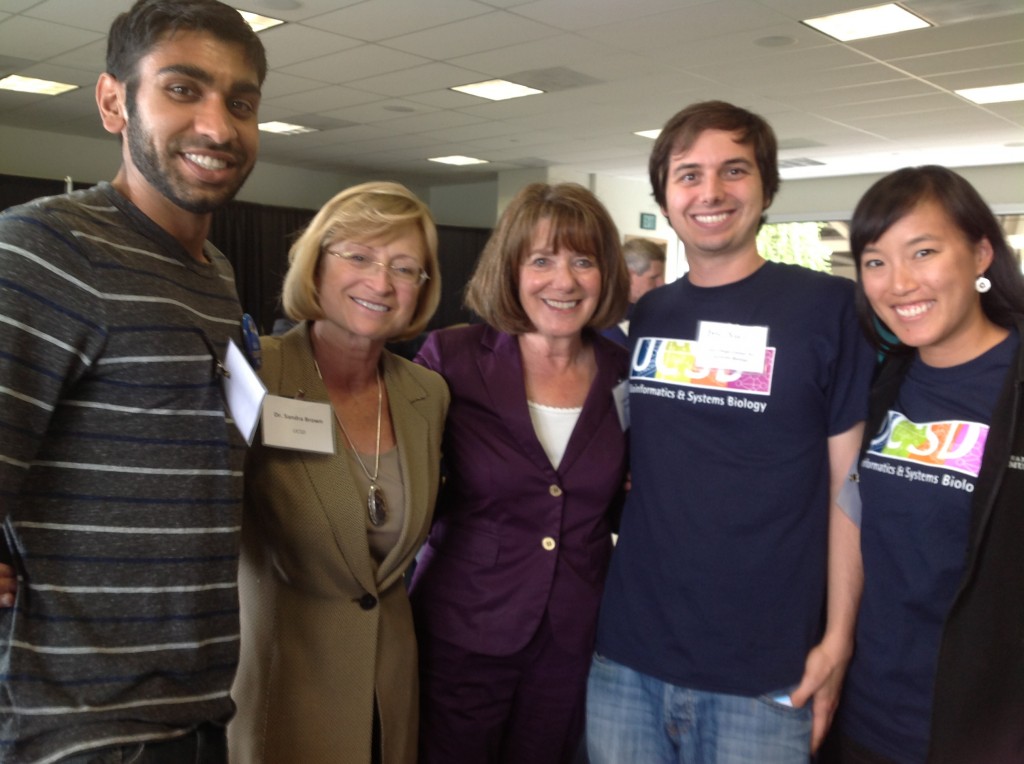
Bioinformatics and Systems Biology graduate students met with UCSD Vice Chancellor of Research Sandra Brown and Congresswoman Susan Davis at the 2014 San Diego Festival of Science and Engineering.
(left to right: Anand Patel, Sandra Brown, Susan Davis, Eric Scott, Katherine Yee)
The activities deployed are described below and are available for use on the 4th floor of the CSE building at the University of California, San Diego. These activities are based on challenging concepts foundational to bioinformatics, yet are presented as an easy-to-grasp puzzle.
Eulerian Path Problem
Frequently in bioinformatics, abstraction of biological problems lends itself to a solution. For example in DNA fragment assembly, the overall objective is to obtain an organism’s genome; this involves solving the Eulerian path problem. To physically demonstrate the Eulerian path problem, we have produced a 3D maze that recreates a graph in which a Eulerian circuit exists. Using a small remote control car, the user will be tasked with passing over every “bridge” exactly once while traveling from a starting position to an ending point. To motivate the problem, we have produced two large posters that clearly diagram the process, goals, history, and application to genome assembly.
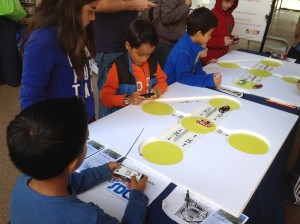
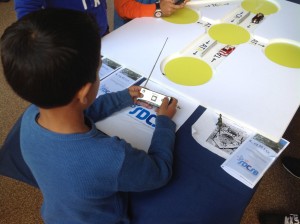
DNA Alignment
Much of modern day genetics research relies on short read sequencing technologies that generate millions of small fragments that need to be mapped onto a larger reference sequence. To perform this mapping process, we use computers to identify the “best” location for the read to a corresponding reference (referred to as alignment). Once aligned we can find differences between the two sequences that might have biological implications. To learn about this alignment process, the participants receive a piece of paper with a colorful DNA sequence that can be folded into an origami helical DNA molecule. They are then tasked to find the best location along a “reference” sequence for their DNA fragment. The reference sequence is displayed on a large poster. The participants are able to keep their folded DNA molecule.
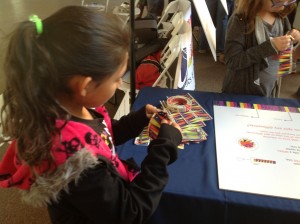
Splice Variant Demonstration
In transcription many potentially incompatible exons are spliced out of a pre-mRNA to form a mature mRNA containing only exons that effectively work together. The splice variant demonstration used a whiteboard with a malleable pictorial story line to depict the splicing of one incoherent story into a coherent story. The story was a model for the coding DNA. The storyboard contained pictures in order from familiar Disney movies to increase familiarity and drive expectation. The students were instructed to extract one story or the other. The pictures were fixed to the whiteboard using magnets to allow movement of individual story components. By splicing out the nonsensical pieces of the story, students were able to experience splicing first hand and actively participate in the conversion of a convoluted nonsensical stream on information into a reasonable and familiar story.
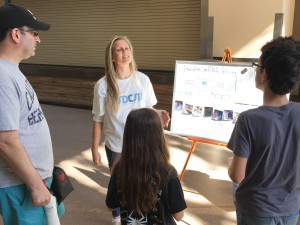
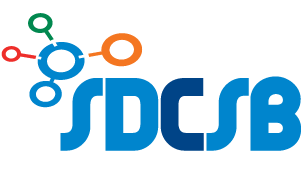
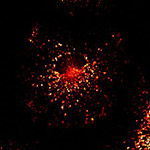






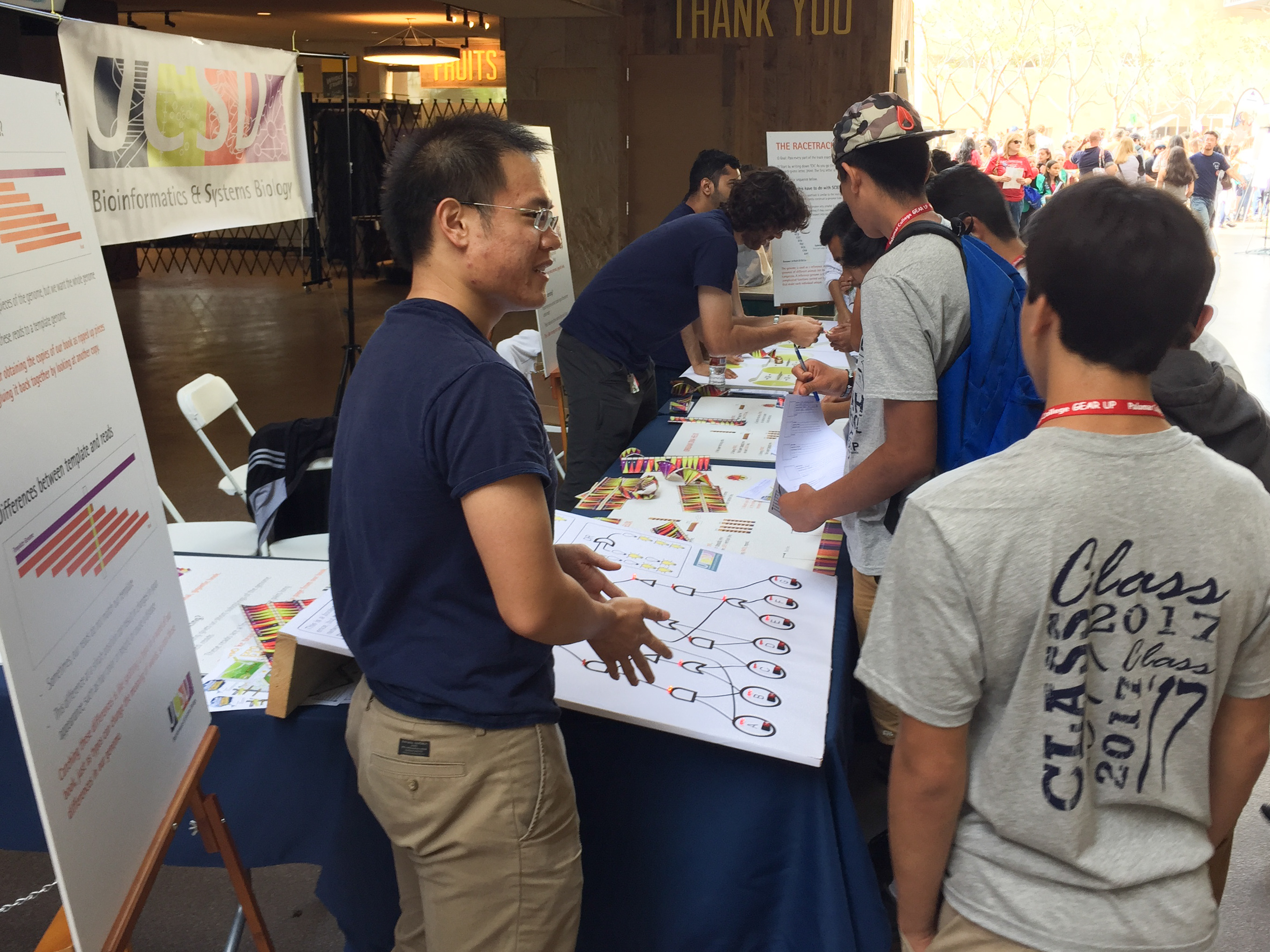
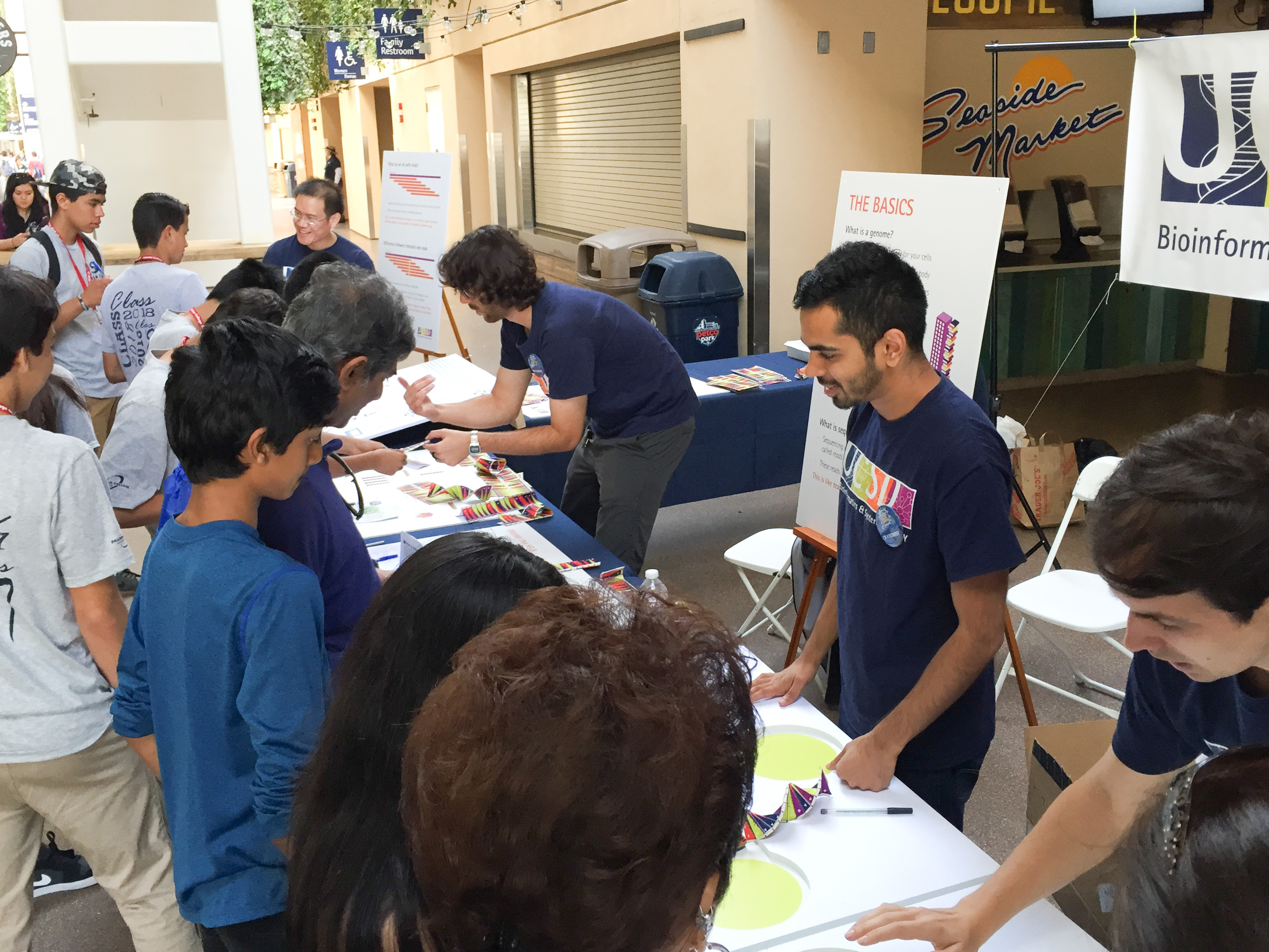
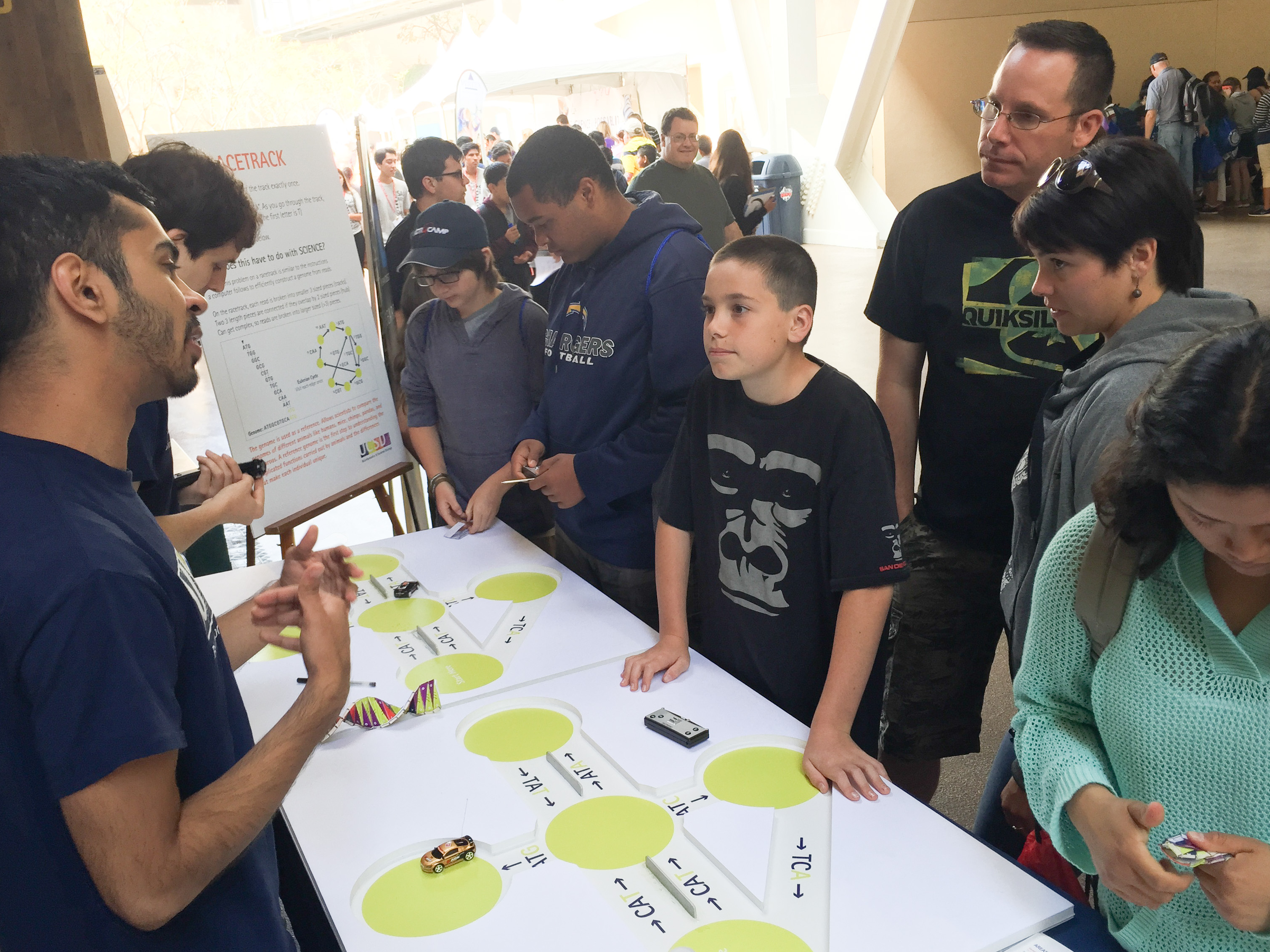
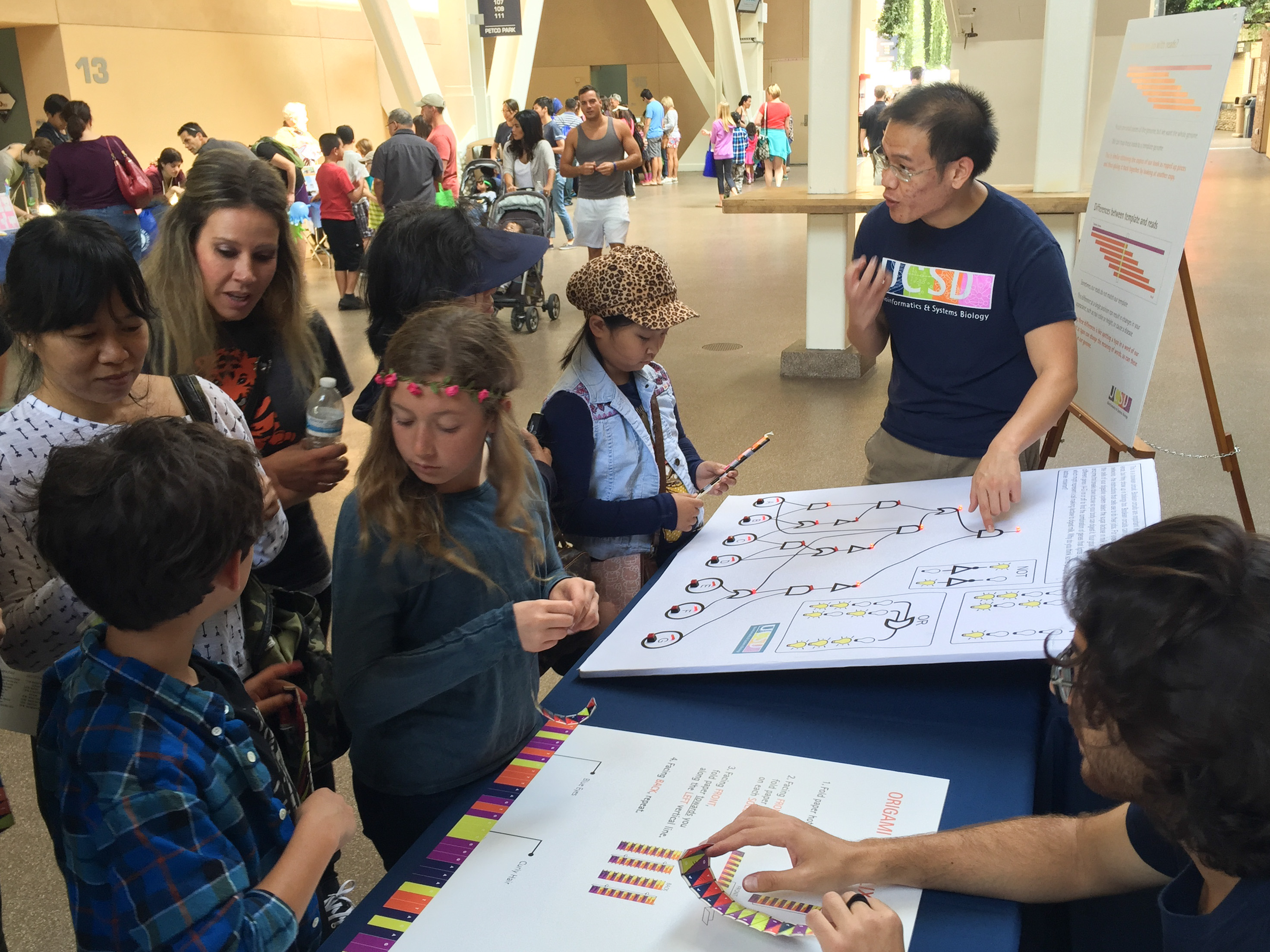
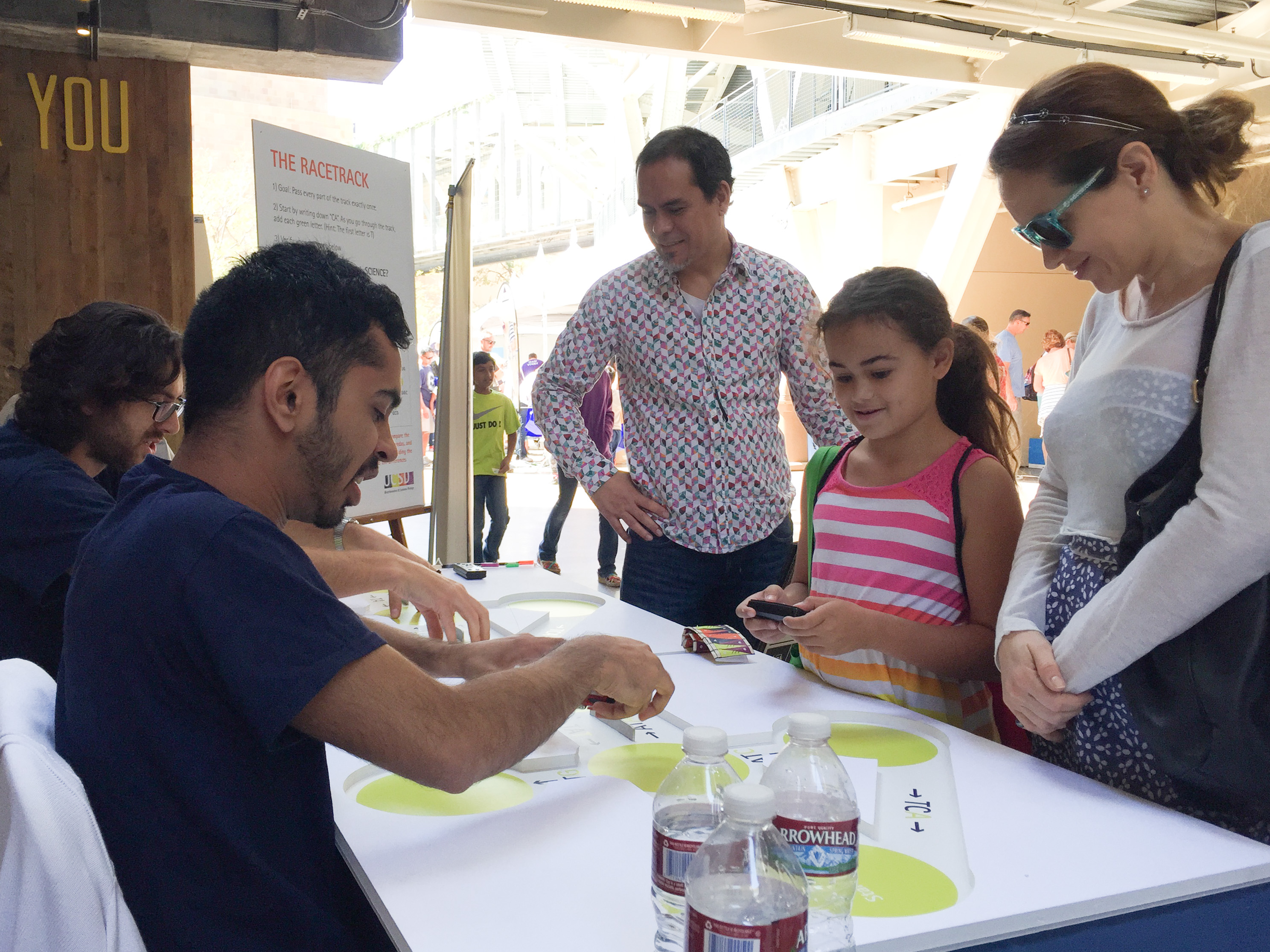
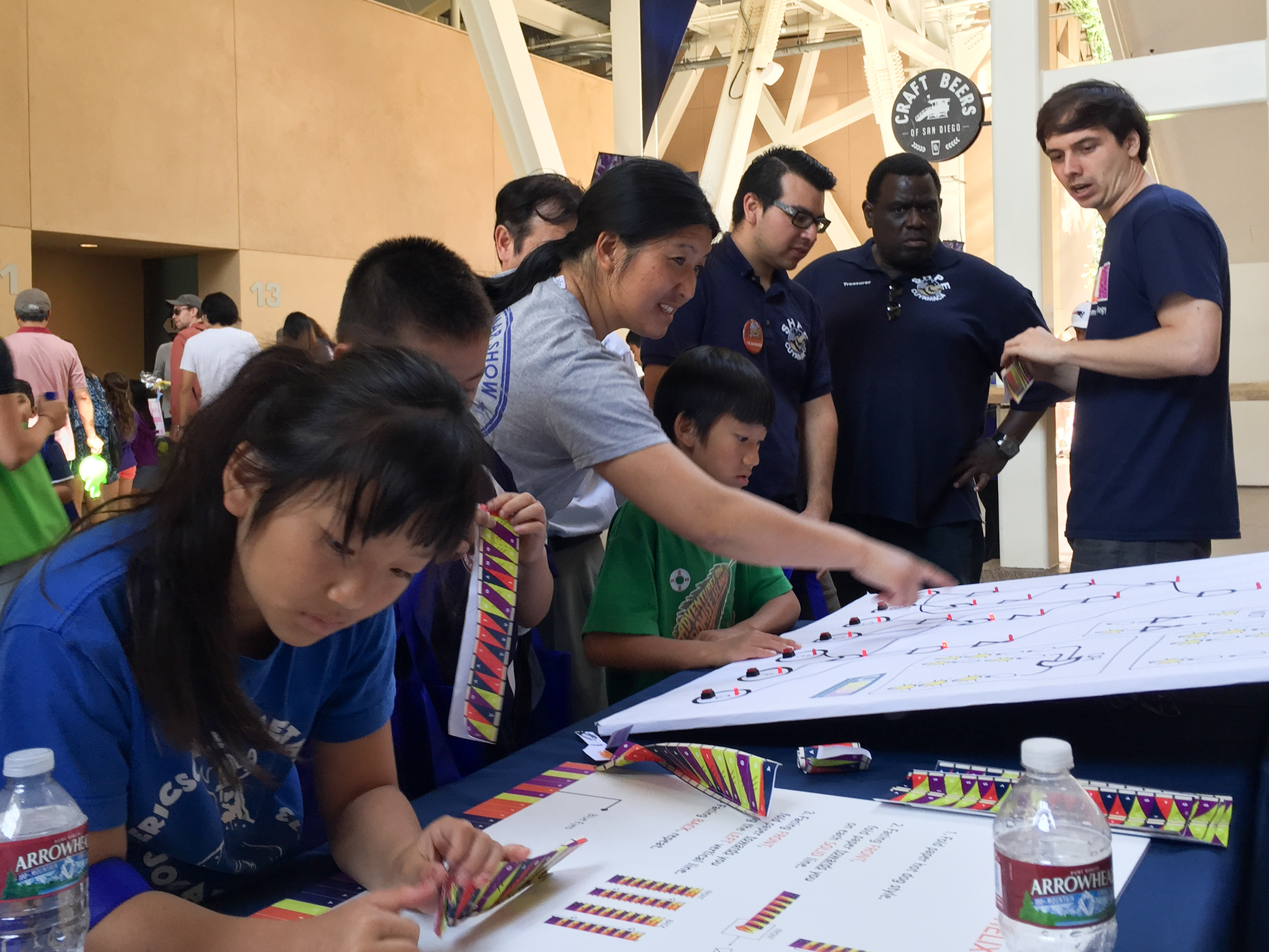
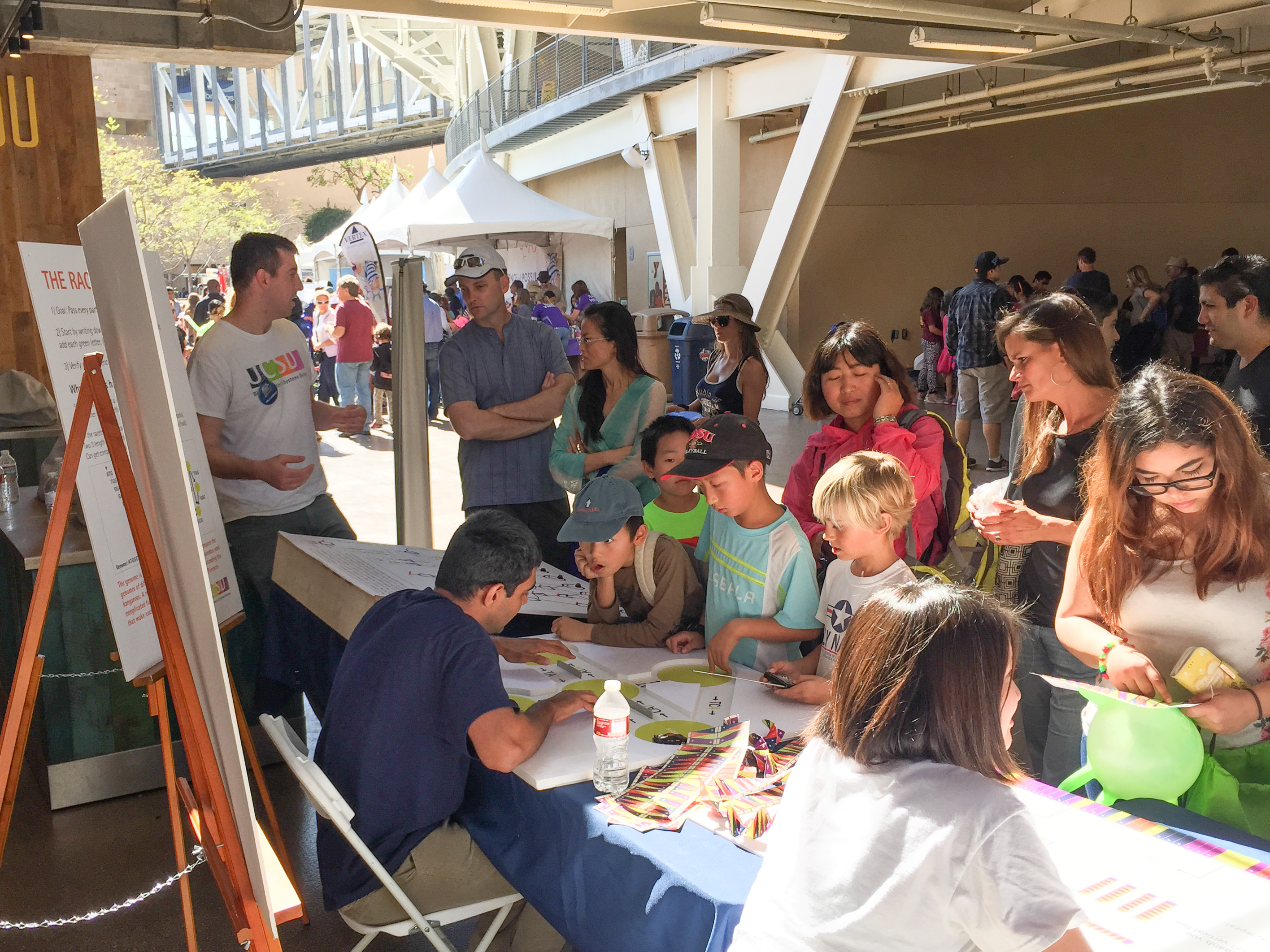
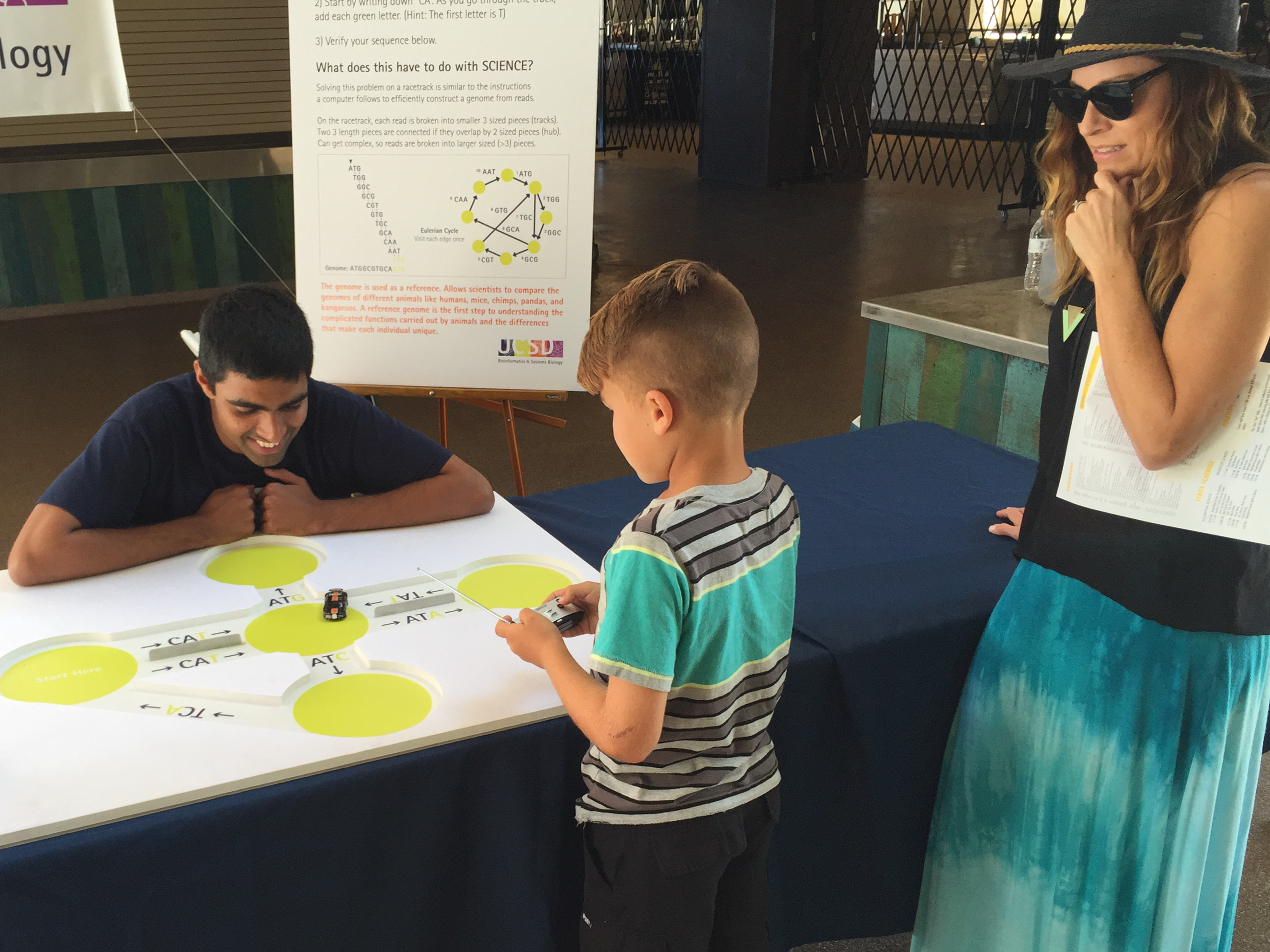
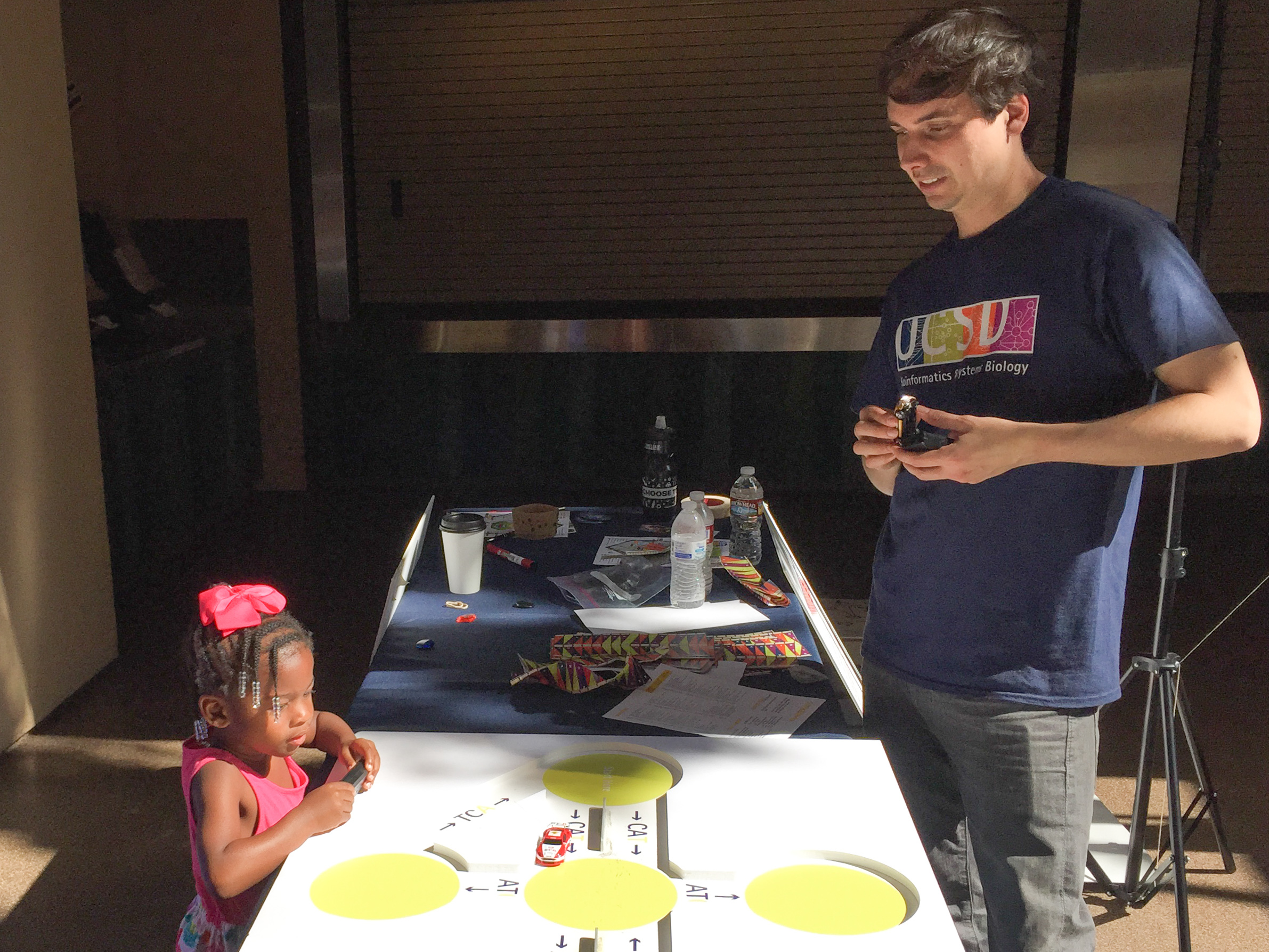
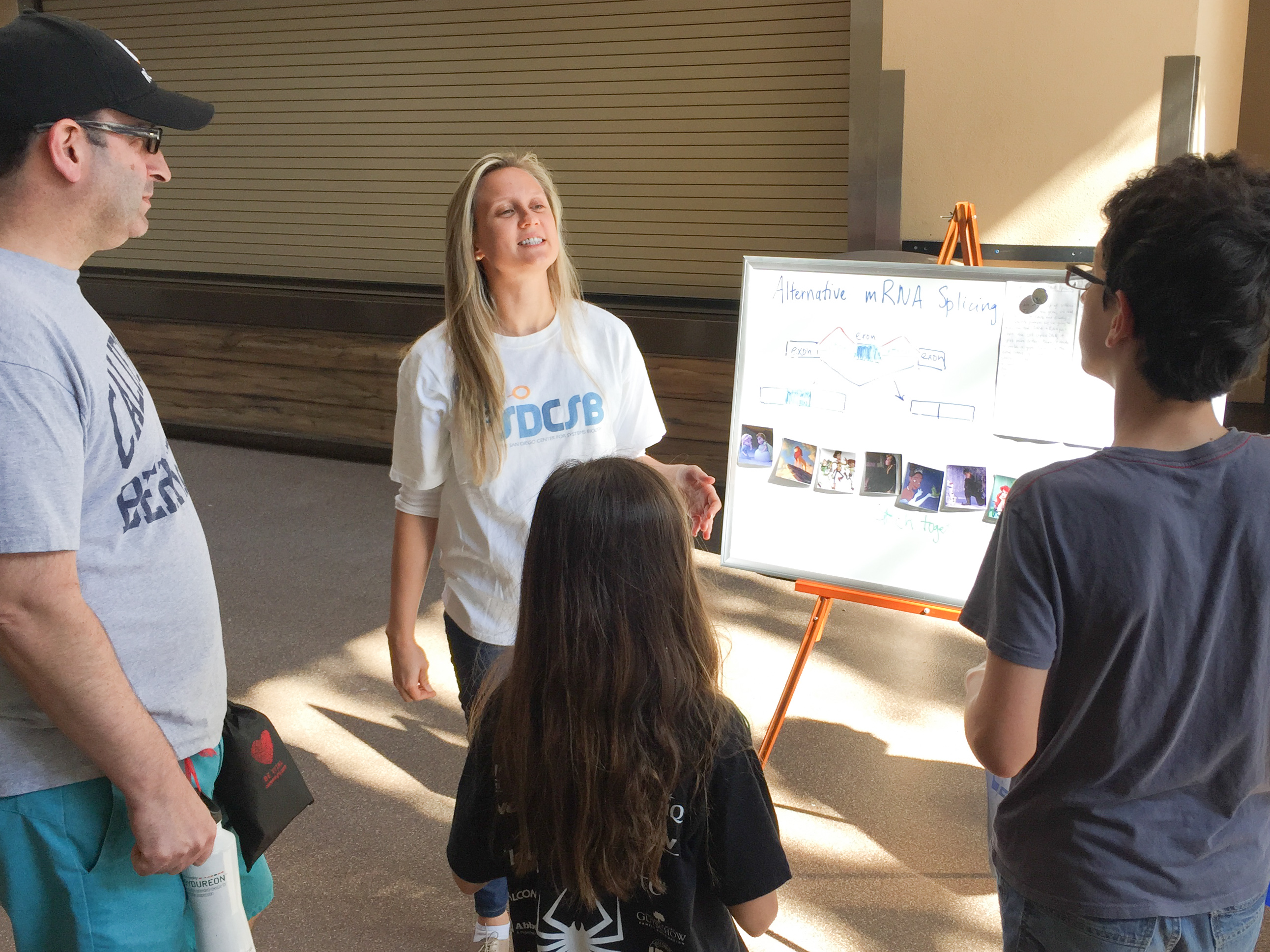
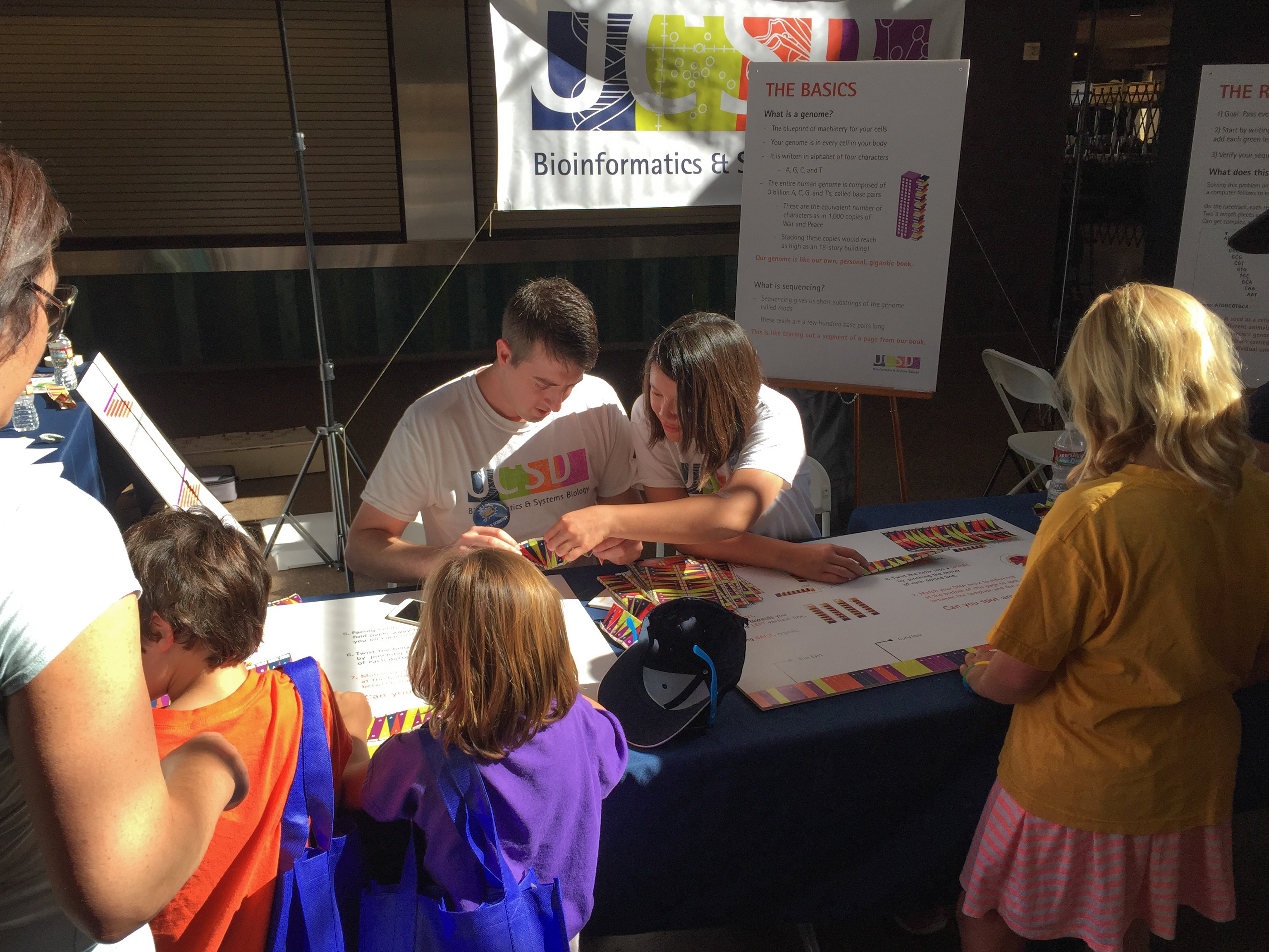
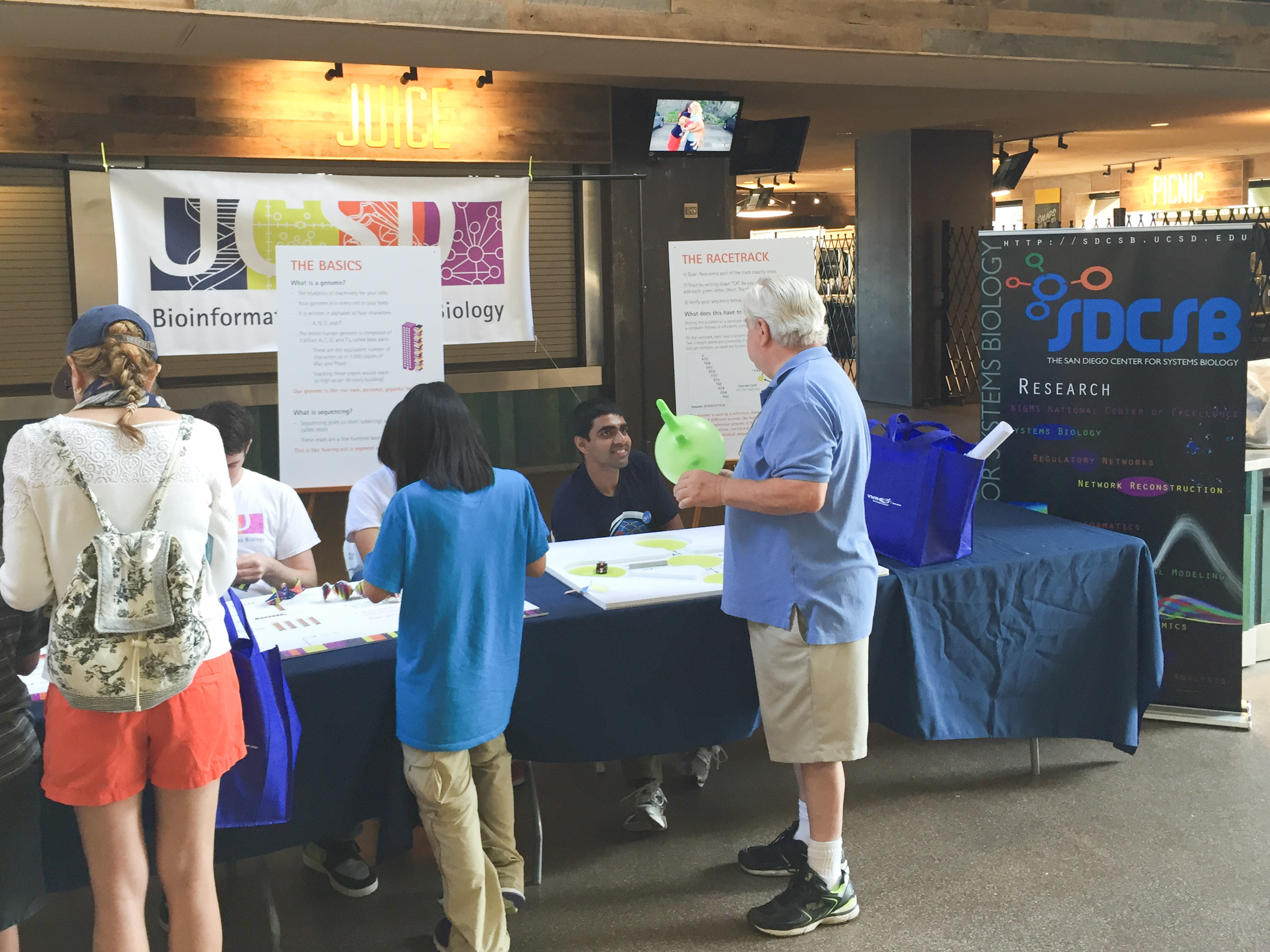

![photo[4]](http://sdcsb.ucsd.edu/wp-content/uploads/2014/03/photo4.jpg)

